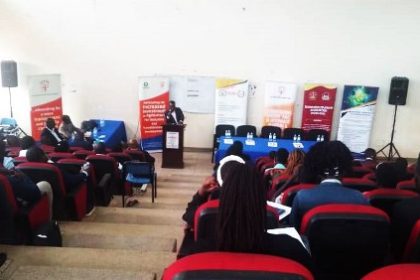Uganda business outlook remains optimistic
December 11—Cost burdens faced by Uganda’s private sector, specifically input purchase prices and staff costs, rose further in November however the Stanbic Uganda Purchasing Managers’ Index (PMI index) reflected a continued improving business outlook as it reached 54.9 from 52.8 recorded in October.
Recently, commenting on these findings, Jibran Qureishi, Regional Economist East Africa Stanbic Bank said, “Business conditions continued to improve in the month of November buoyed mainly by rising new orders which boosted output to its highest level since October 2016.”

Qureishi said the stable macroeconomic conditions along with falling inflation rates bode well for Uganda’s private sector.
The increase was attributed to higher underlying demand, resulting in higher volumes of new orders, purchases of stocks across the agriculture, construction industry, services and wholesale & retail sub-sectors.
The Stanbic PMI is a composite index, calculated as a weighted average of five individual sub-components: New Orders (30%), Output (25%), Employment (20%), Suppliers’ Delivery Times (15%) and Stocks of Purchases (10%). Readings above 50.0 signal an improvement in business conditions on the previous month, while readings below 50.0 show deterioration.
New orders from abroad expanded in November. This was the second time in the survey’s 18-month history that exports increased. Respondents partially linked the rise to the improved quality of products.
Buoyed by higher demand, companies increased capacity further in November. Workforce numbers expanded in line with the trend throughout the survey so far.
Businesses were therefore able to cope with the rise in new orders as four out of the five monitored sub-sectors worked through their backlogs. Meanwhile, there were also signs of sufficient capacity at suppliers as delivery times shortened again.
Qureishi said, “In fact, with the end of the political deadlock in neighboring Kenya which remains a key trading partner for Uganda, new orders and output should continue to rise over the coming months. In addition, stable macroeconomic conditions with subsiding inflation should also continue to bode well for Uganda’s private sector.”
The Uganda Bureau of Statistics Consumer Price Index report for November indicated that there had been a drop in overall inflation from 4.8% to 4%.
Stanbic PMI is based on data compiled from monthly replies to questionnaires sent to purchasing executives in approximately 400 private sector companies, which have been carefully selected to accurately represent the true structure of the Ugandan economy, including agriculture, construction, industry, services and wholesale & retail. The panel is stratified by GDP and company workforce size. Survey responses reflect the change, if any, in the current month compared to the previous month based on data collected mid-month.
In a major development, for only the second time in the survey’s 18 month history Ugandan exports increased. This was attributed to continued improvements in the quality of finished products. Ugandan exports had been on a steady decline as a result of the political impasse in Kenya and outbreak of war in Southern Sudan which had been Uganda’s main export market and trade route to Sudan which is the second largest buyer of Ugandan coffee.
Analysing the employment figures, Okwenje Benoni Stanbic Bank’s Fixed Income Manager said, “Driven by higher demand, companies increased capacity further in November resulting in an expansion of workforce numbers. Businesses were therefore able to cope with the rise in new orders and work through their backlogs.”
He said, “In a further reflection of the positive economic environment, businesses increased their purchasing activity for the sixth consecutive month. Consequently, stocks of purchases increased in line with the survey trend.”

 Employer hiring up during November as Stanbic PMI rises to 53.4
Employer hiring up during November as Stanbic PMI rises to 53.4
 Shell Club rewards first winners with brand new motorbikes in Mbale
Shell Club rewards first winners with brand new motorbikes in Mbale
 CSBAG roots for increased funding for renewable energy
CSBAG roots for increased funding for renewable energy
 Equity walks tried and tested path to deliver solid half-year
Equity walks tried and tested path to deliver solid half-year
 Nile Breweries primes retailers for brave new world
Nile Breweries primes retailers for brave new world
 Uganda calls for collaboration with airlines in fight against illicit trade in wildlife
Uganda calls for collaboration with airlines in fight against illicit trade in wildlife
